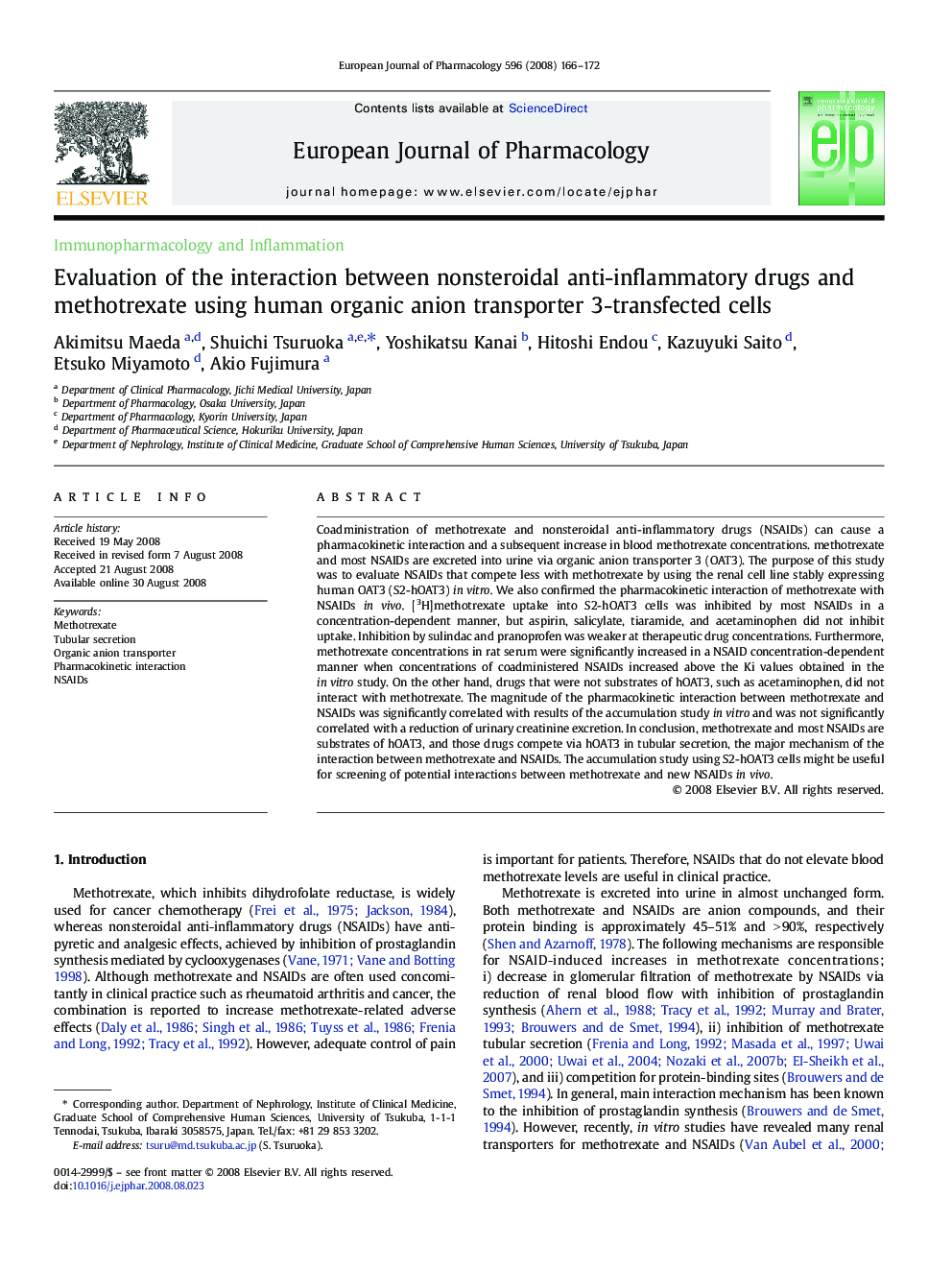| Article ID | Journal | Published Year | Pages | File Type |
|---|---|---|---|---|
| 2534819 | European Journal of Pharmacology | 2008 | 7 Pages |
Coadministration of methotrexate and nonsteroidal anti-inflammatory drugs (NSAIDs) can cause a pharmacokinetic interaction and a subsequent increase in blood methotrexate concentrations. methotrexate and most NSAIDs are excreted into urine via organic anion transporter 3 (OAT3). The purpose of this study was to evaluate NSAIDs that compete less with methotrexate by using the renal cell line stably expressing human OAT3 (S2-hOAT3) in vitro. We also confirmed the pharmacokinetic interaction of methotrexate with NSAIDs in vivo. [3H]methotrexate uptake into S2-hOAT3 cells was inhibited by most NSAIDs in a concentration-dependent manner, but aspirin, salicylate, tiaramide, and acetaminophen did not inhibit uptake. Inhibition by sulindac and pranoprofen was weaker at therapeutic drug concentrations. Furthermore, methotrexate concentrations in rat serum were significantly increased in a NSAID concentration-dependent manner when concentrations of coadministered NSAIDs increased above the Ki values obtained in the in vitro study. On the other hand, drugs that were not substrates of hOAT3, such as acetaminophen, did not interact with methotrexate. The magnitude of the pharmacokinetic interaction between methotrexate and NSAIDs was significantly correlated with results of the accumulation study in vitro and was not significantly correlated with a reduction of urinary creatinine excretion. In conclusion, methotrexate and most NSAIDs are substrates of hOAT3, and those drugs compete via hOAT3 in tubular secretion, the major mechanism of the interaction between methotrexate and NSAIDs. The accumulation study using S2-hOAT3 cells might be useful for screening of potential interactions between methotrexate and new NSAIDs in vivo.
